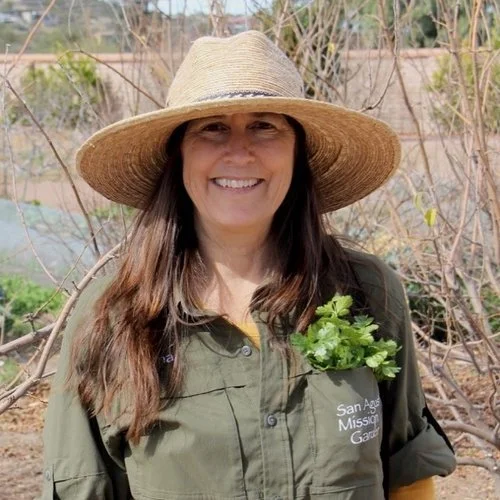Caring For The Land
By Dena Cowan, Curator of Collections
We are an agricultural heritage museum, so creating an environment for learning and sharing knowledge about our local ethnobotanical history is foremost in our hearts and minds. At the same time, taking care of the land is an even greater responsibility.
Every time we reap a gorgeous crop, I always say to our surprised volunteers, “People have been cultivating this land for over 4,000 years for a reason.” It is exceptionally fertile floodplain soil, among the last few arable plots of land on this stretch of the Santa Cruz River Valley that has still not succumbed to urban sprawl. It is better than gold. It is sacred: soil that has given sustenance to countless generations, that can continue to do so into the future. Soil that we can hold in our hands and in which we sow seeds, that was also touched and farmed by women, children, and men long ago. Soil that not only gives us fruits, but also connects us to our past, to our heritage.
Respect for the land is utmost in everything we do, from employing farming methods that increase soil health, reducing inputs and keeping waste to a minimum, protecting wildlife and habitat, and growing a diverse array of heirloom crops as well as native perennial food-bearing and medicinal plants.
Wildflowers in the Medicinal Garden
A new section called “Caring for the Land” on our online virtual tour (“Mission Garden Stories'') describes the practices we employ to be the best stewards of this land that we can be. You can link to this new section here. And if you haven’t had the chance to check out the rest of the stories on this Storymap of the Garden, now is a good time to do it! There are detailed descriptions of all the Timeline Gardens and Special Features, and many of our special plants, in addition to an interactive map of all our trees, including in-depth descriptions of the different varieties. You can also access “Mission Garden Stories'' homepage here, or through our website missiongarden.org by going to the “Visit” or “Learn” tab and taking the “Virtual Tour”.
Dena Cowan
Curator


